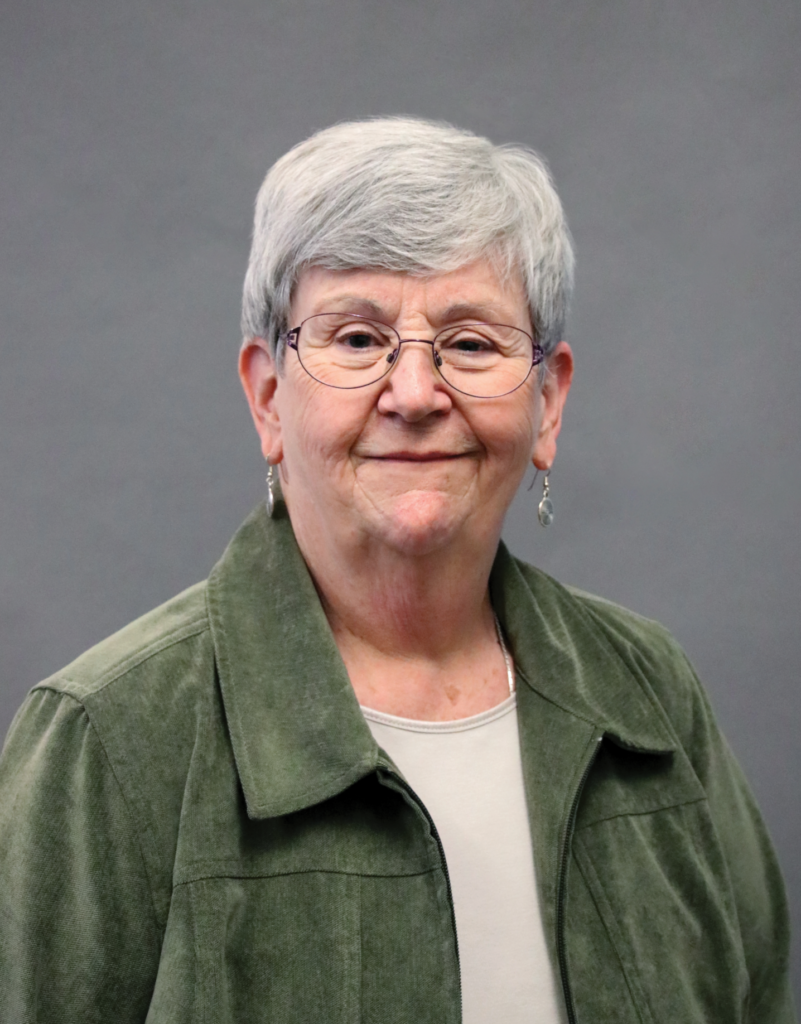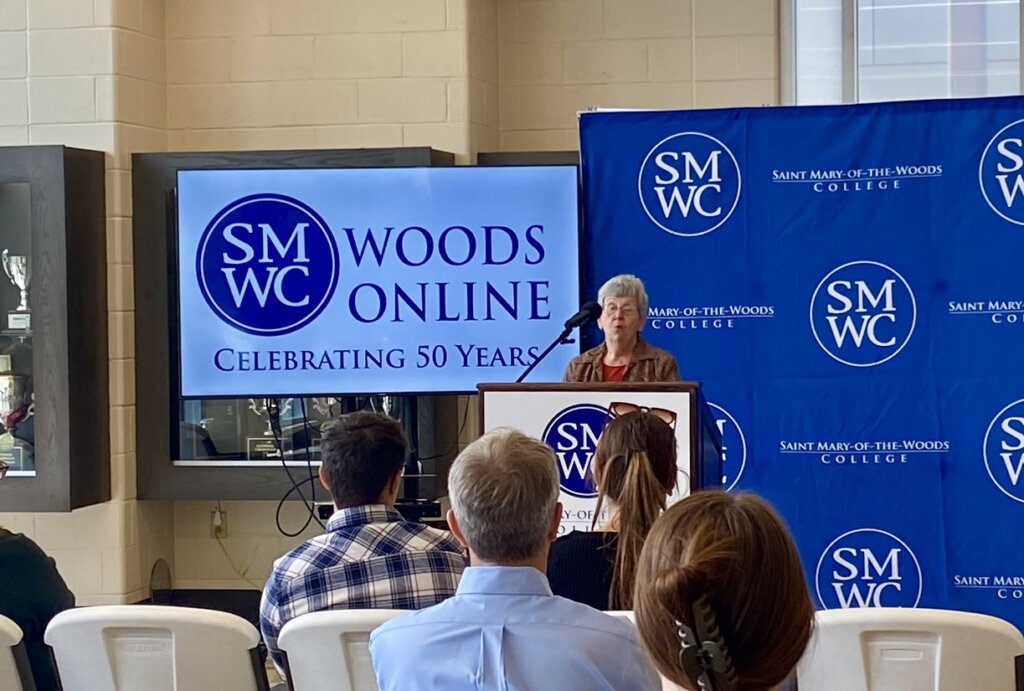By Alice Quinlan ’65
Women’s External Degree, Woods External Degree, Woods Online…the name changes signal the evolution of distance education at The Woods and the students who enrolled. Who were they?
At the beginning, not everyone thought offering an external degree at Saint Mary-of-the-Woods College was a good idea. There were questions about whether the quality of courses and student learning would meet Woods standards.

So, a plan evolved to first offer the opportunity to our former students and then carefully assess the results. They already had solid academic foundations at The Woods, and some needed just a semester or two for graduation. So, the first former Woods students enrolled in the Women’s External Degree program in 1973 and graduated in 1974.
A second group among the first students was nurses; they had earned an RN but not a bachelor’s degree. These hard-working professionals were glad for a chance to complete a degree while continuing to work.
Soon, positive program evaluations, both internal and external, won over skeptics. WED moved forward and many more women became interested.
Who were they? Women with busy lives, employed, raising children, involved in community activities. But they needed or wanted a college degree: to get a better job or a promotion, to be a role model for their children, to be lifelong learners. And they wanted studies they could squeeze into tight schedules.
The median age of WED students was 37; three-quarters of them were married with children or were single parents; 85% were employed – two-thirds of them full-time.
The women came primarily from Indiana and Illinois, especially within 150 miles or so…but also from across the United States in nearly every state and a scattering of international locations.
WED students came to campus for an orientation. At first, the program required a week’s stay, later just a weekend, and finally just a day to meet with advisors and professors. The most popular majors among WED students in the first 30 years were in business; then education, psychology and human services.
For students who began with little previous college credit, the road to a degree was long. Some asked about weekend experiences on campus that might speed their progress—but not every weekend. Our wonderfully creative faculty developed alternative format courses—all-day classes, meeting 2-3 times a semester, combined with distance learning assignments and activities. Saint Mary-of-the-Woods College provided hybrid learning before the phrase was even invented. Many WED students enrolled in alternative format courses each year, getting a taste of a “traditional” class and a chance to connect and encourage each other.
In the late 1980s, the WED program was approved by Indiana’s Department of Education to offer programs leading to teacher licensure, especially for people who already had a degree. The College admitted both men and women into these post-baccalaureate teacher licensure majors, and over the years, helped hundreds of individuals gain teaching credentials and jobs.

As time went on, WED students began to ask: “My husband/brother/neighbor is interested in the program—why don’t you enroll men for degrees?” Possibilities and pressures grew. The College researched, surveyed, considered and decided in 2005 to enroll men in the distance education program, which was renamed the Woods External Degree program—still WED. Times change, the world changes. Technology, of course, completely changed distance education.
Once, the modes of communication between student and faculty member had been mail, cassette tapes, videotapes and expensive long-distance telephone calls. In the 1990s, the computer brought huge advances.
The College’s mainframe computer in Guerin Hall gave way to individual portable computers (PCs) for faculty and staff and then a fully networked campus.
Students got desktop computers at home and were soon on dial-up with modems soon followed by internet connections and email.
The first online course in WED was advanced accounting, developed by a faculty pioneer in 1996. Within a few years, more than 60 online courses were available to WED students; in 2008 the College adopted a learning management system for them.
By then, the concept and even the name “external degree” had run its course as more colleges offered distance education in varied configurations.
Prospective students wanted fully online courses and programs that didn’t require coming to campus. Thus, the WED program transitioned to Woods Online (WOL) in 2011.
In conclusion, I want to say the obvious: WED would not have been possible without the extraordinary work of Woods faculty—who were sometimes teaching courses in three different formats; who taught, mentored and appreciated adult students. And right along with them are College staff and administrators who worked so hard to provide WED/Woods Online students with the services they need to succeed.
Over the past 50 years, more than 5,000 persons have completed an undergraduate degree or post-baccalaureate program through WED/WOL. That’s an average of more than 100 persons a year for 50 years.
Aren’t you proud of Saint Mary-of-the-Woods College offering distance education to them in so many different ways?
Happy 50th anniversary!
Alice Quinlan ’65, graduated from SMWC with a degree in Physics. She served as director for the Woods External Degree (WED) program from 1989 to 2008. She continues to be involved and connected to the College as a volunteer in the Saint Mary-of-the-Woods Archives.

3 Comments